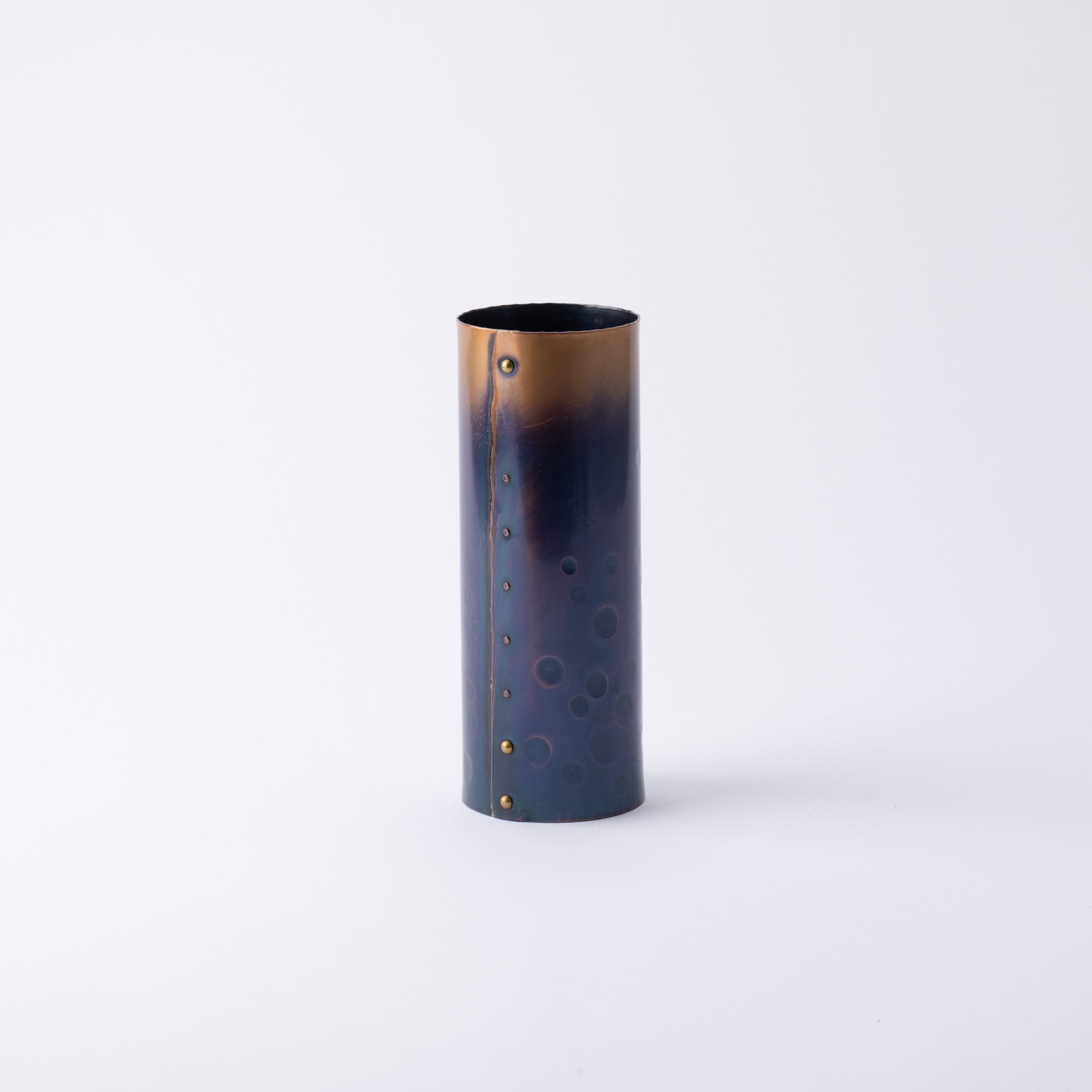
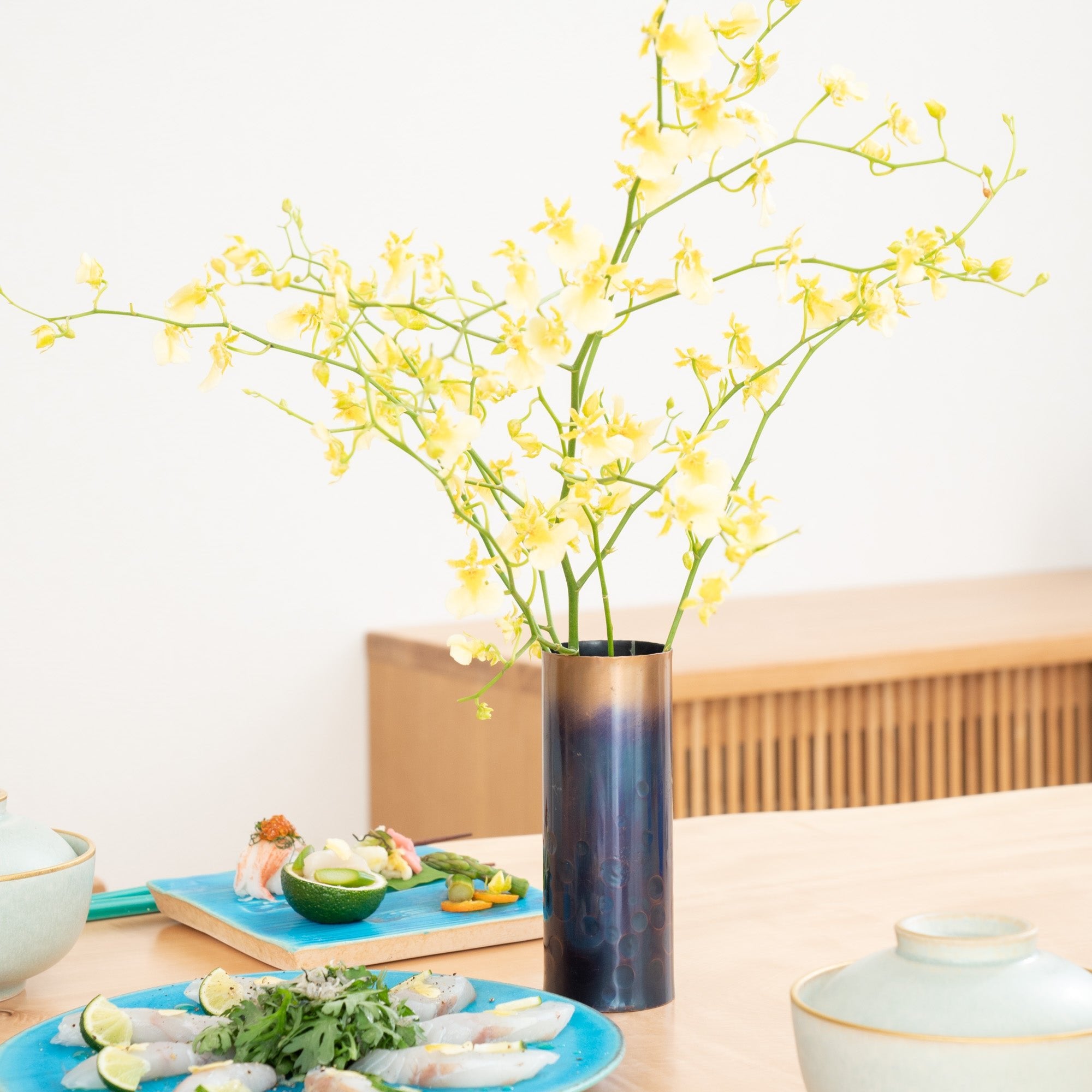
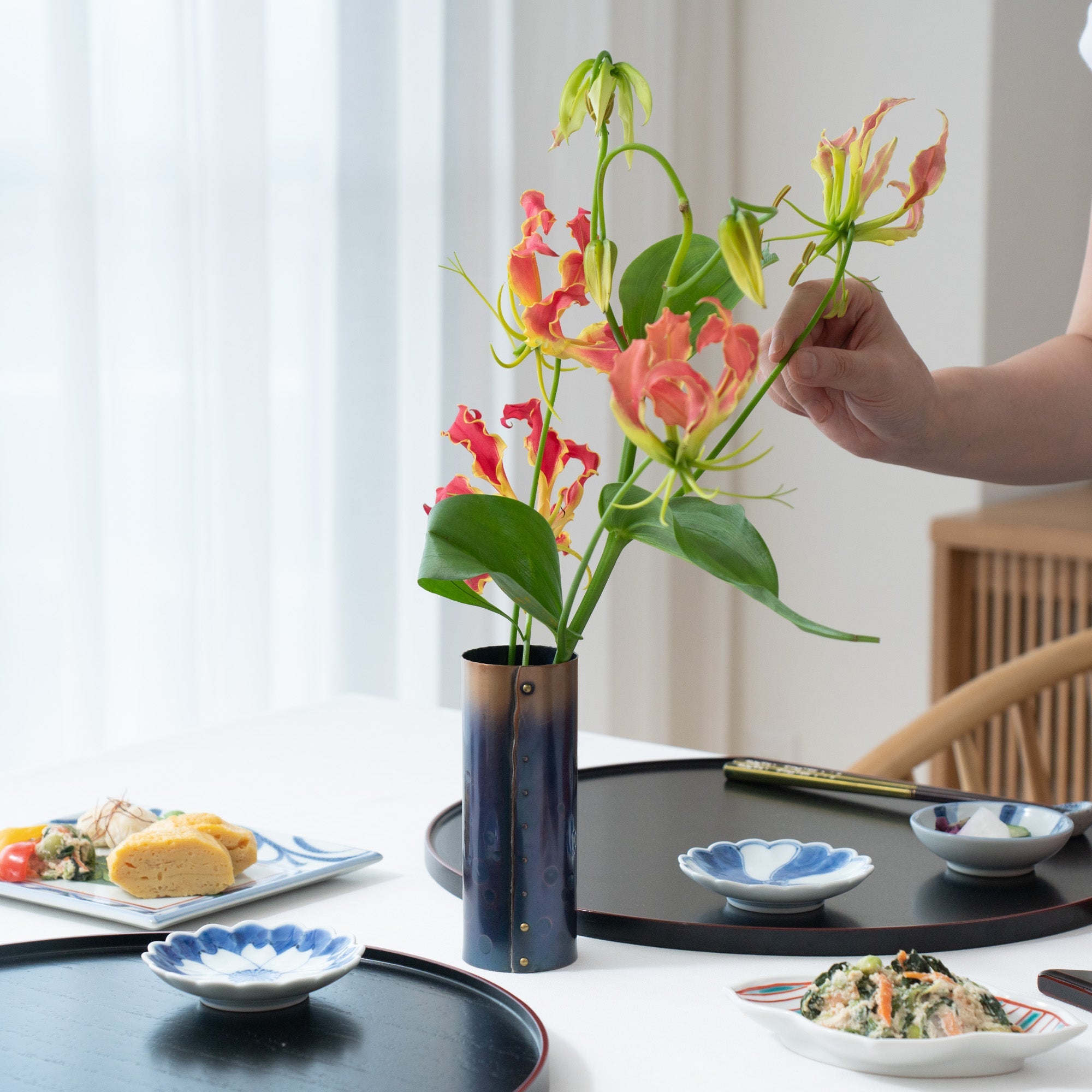
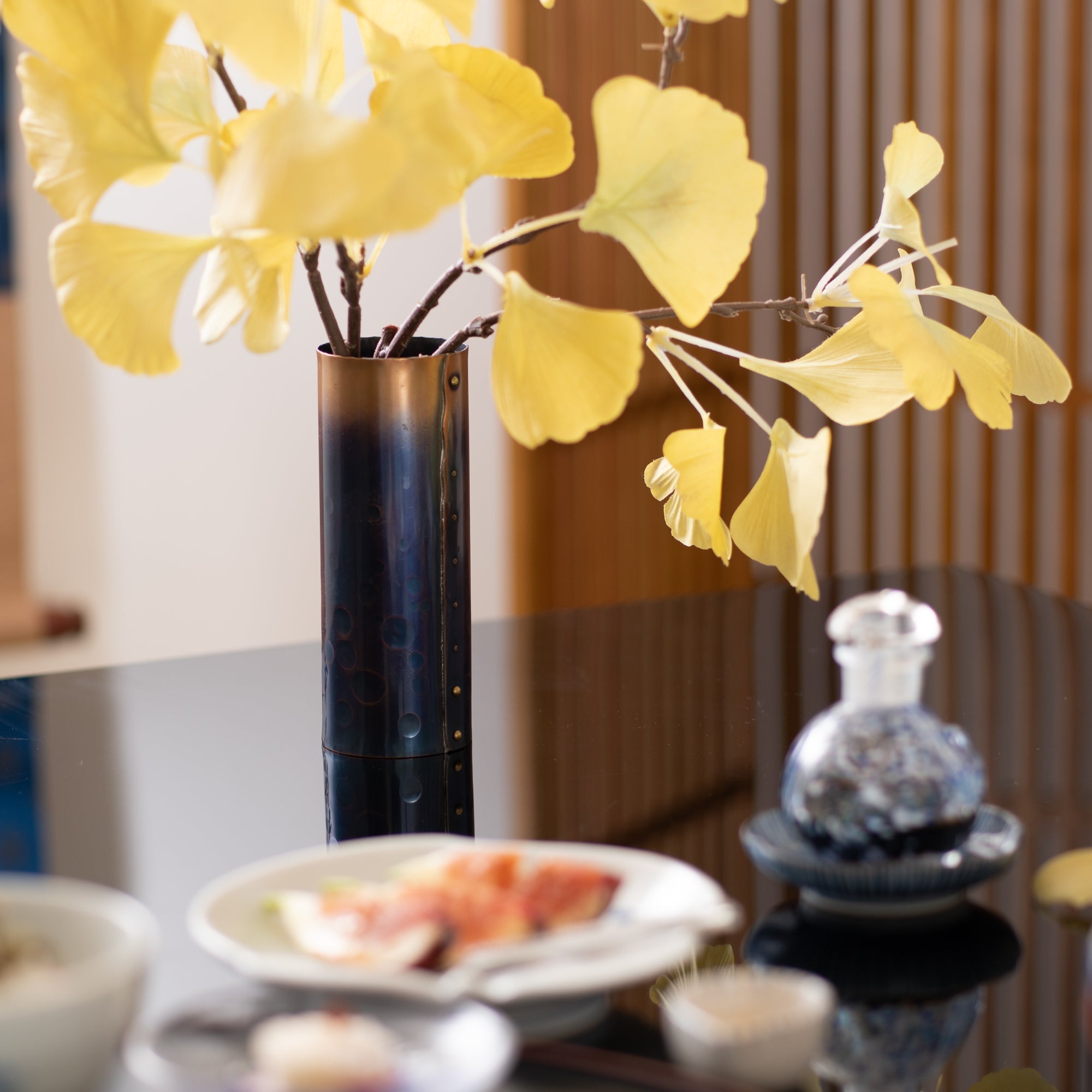
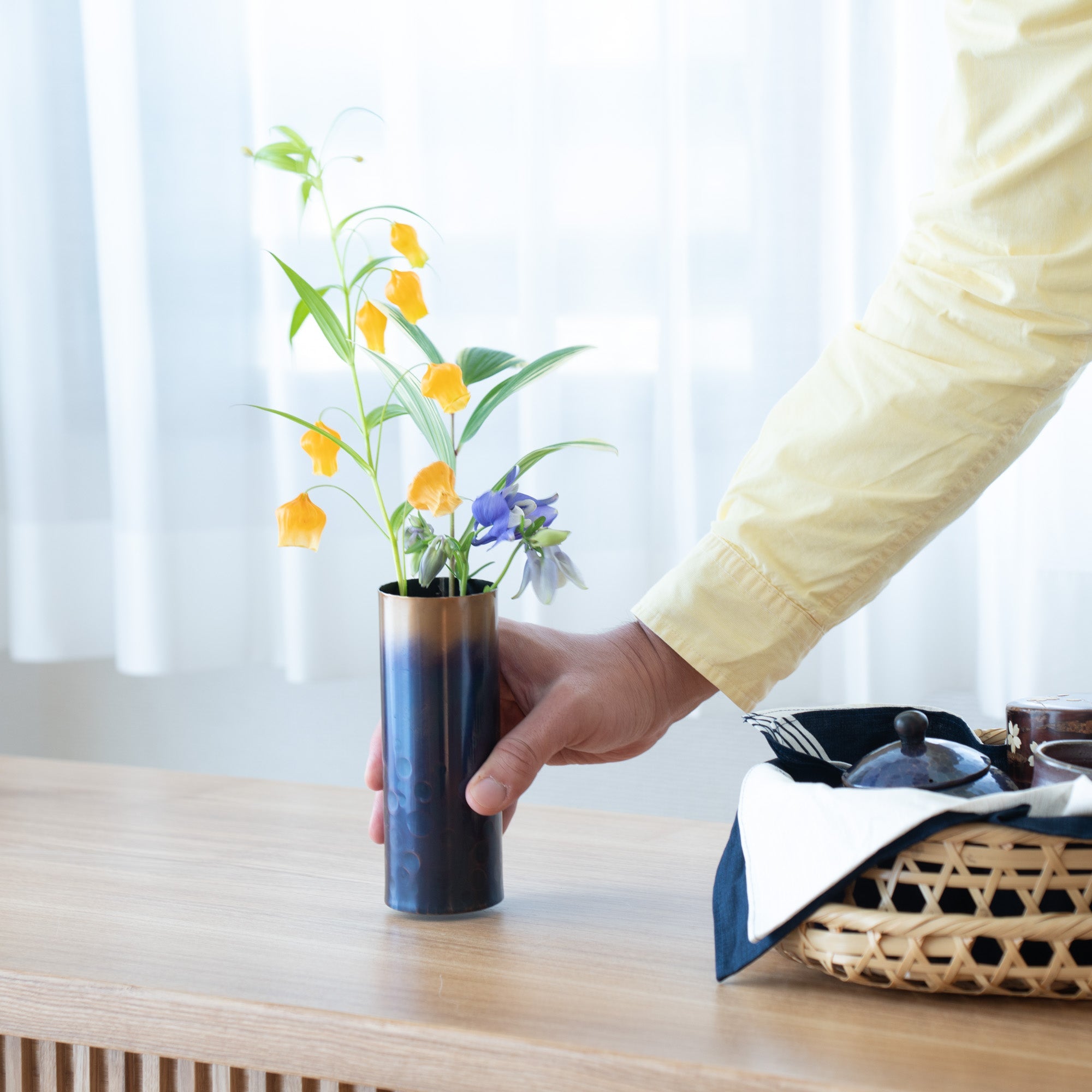
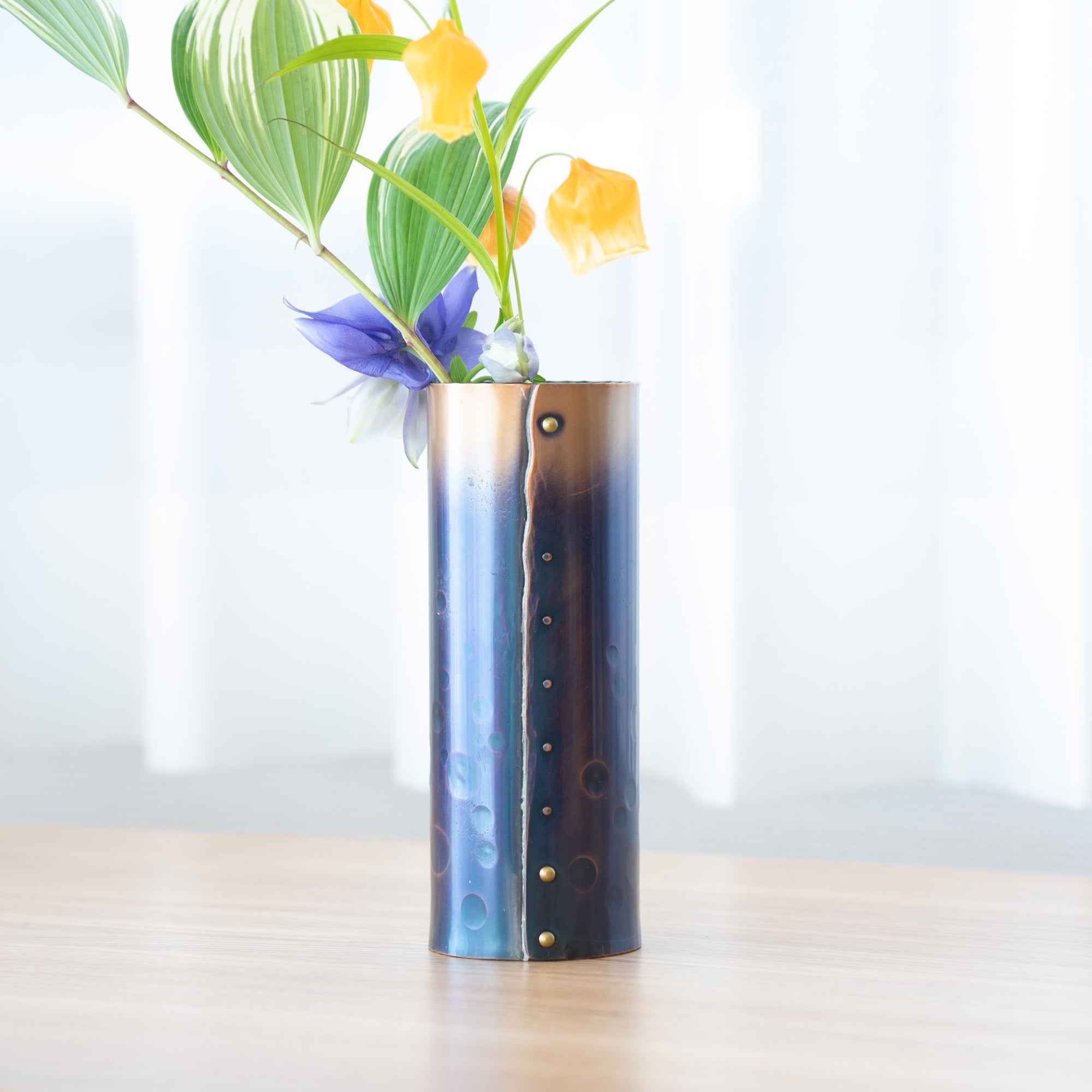
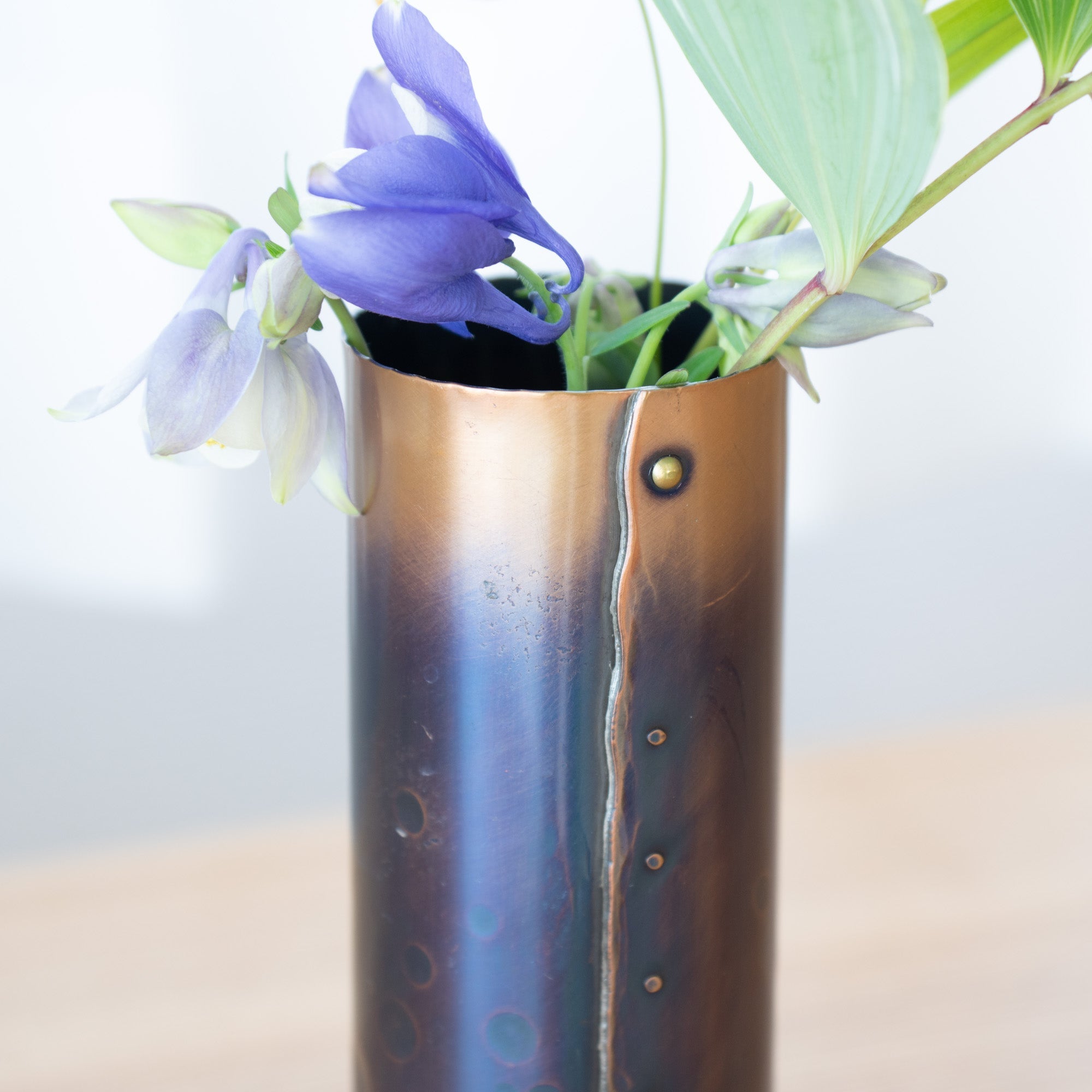
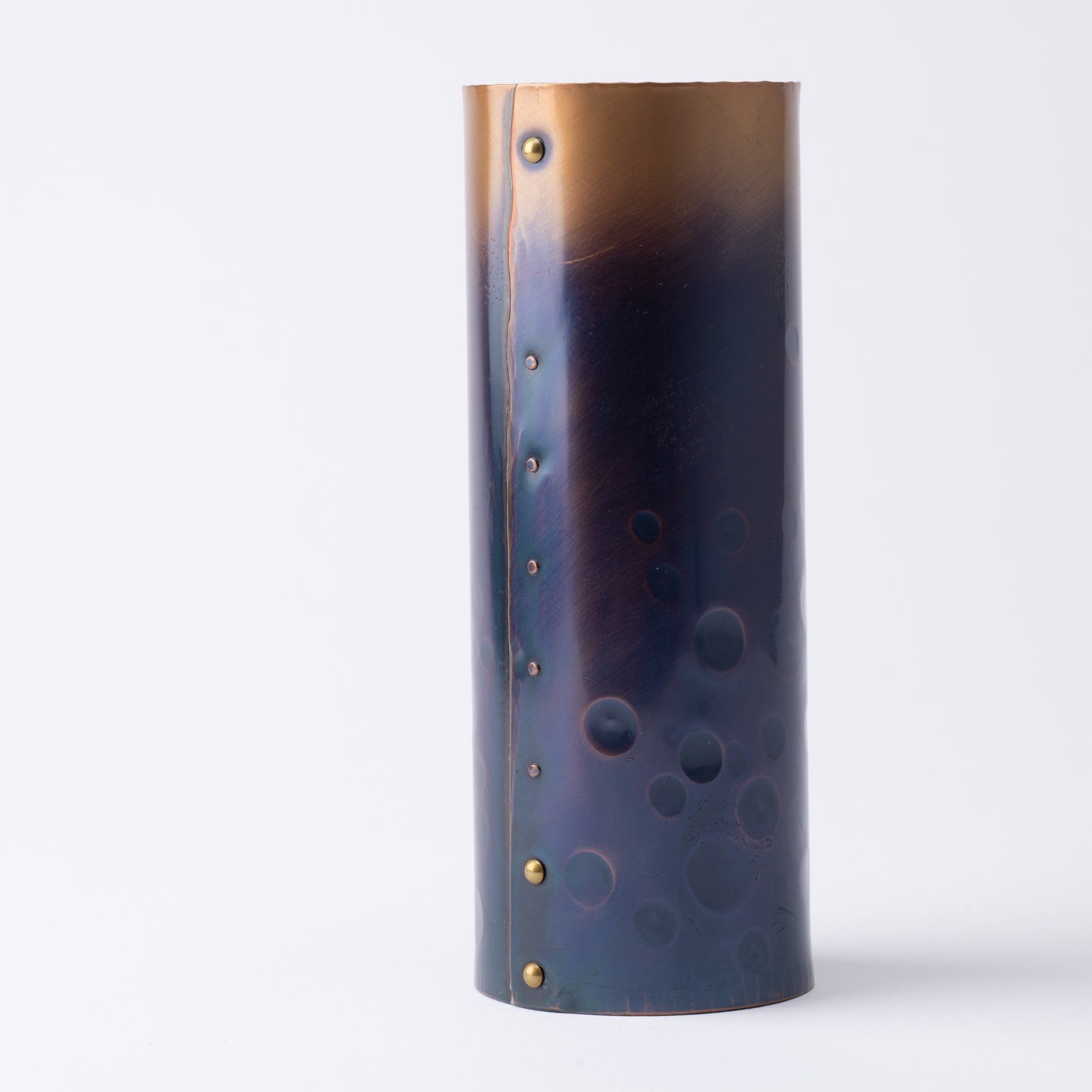
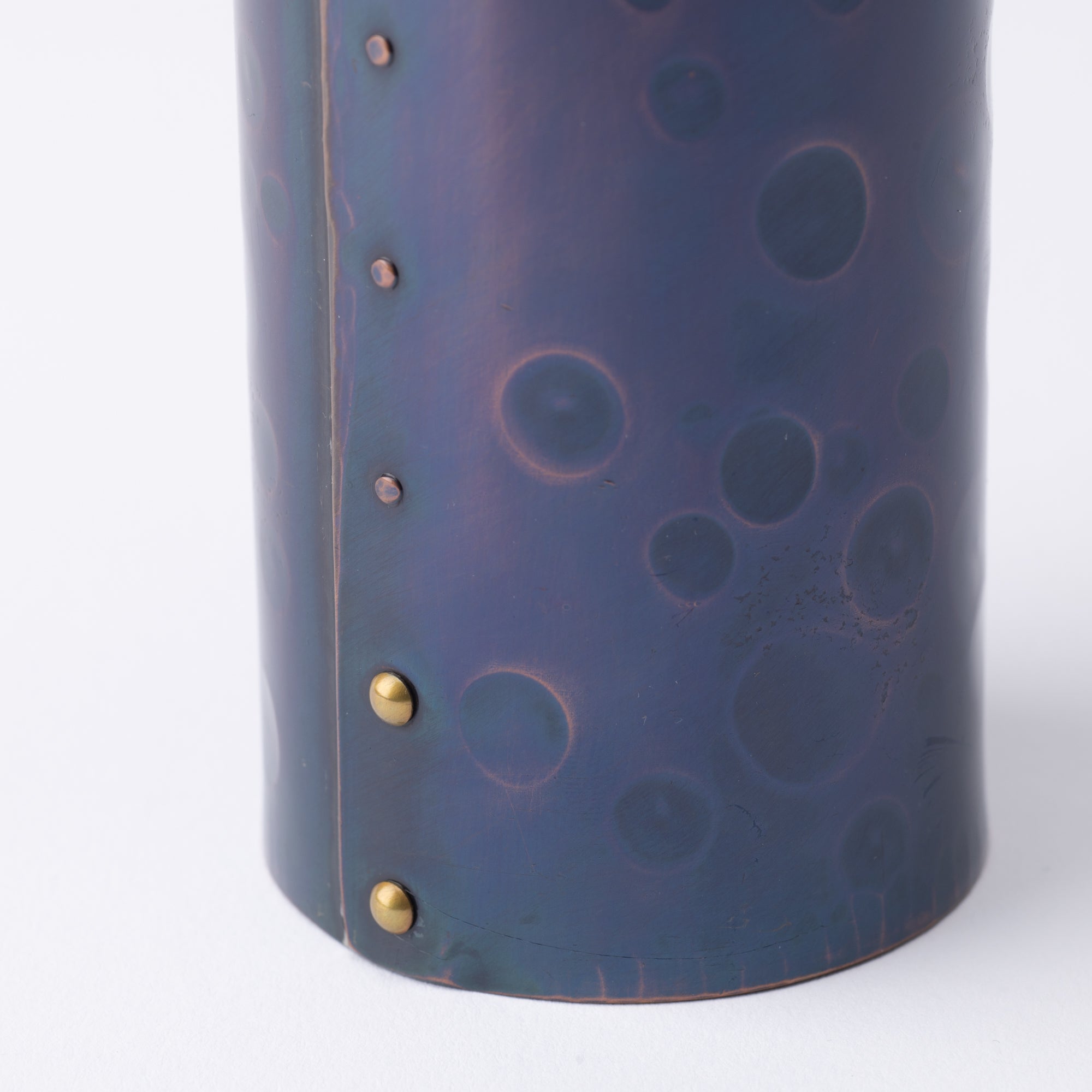
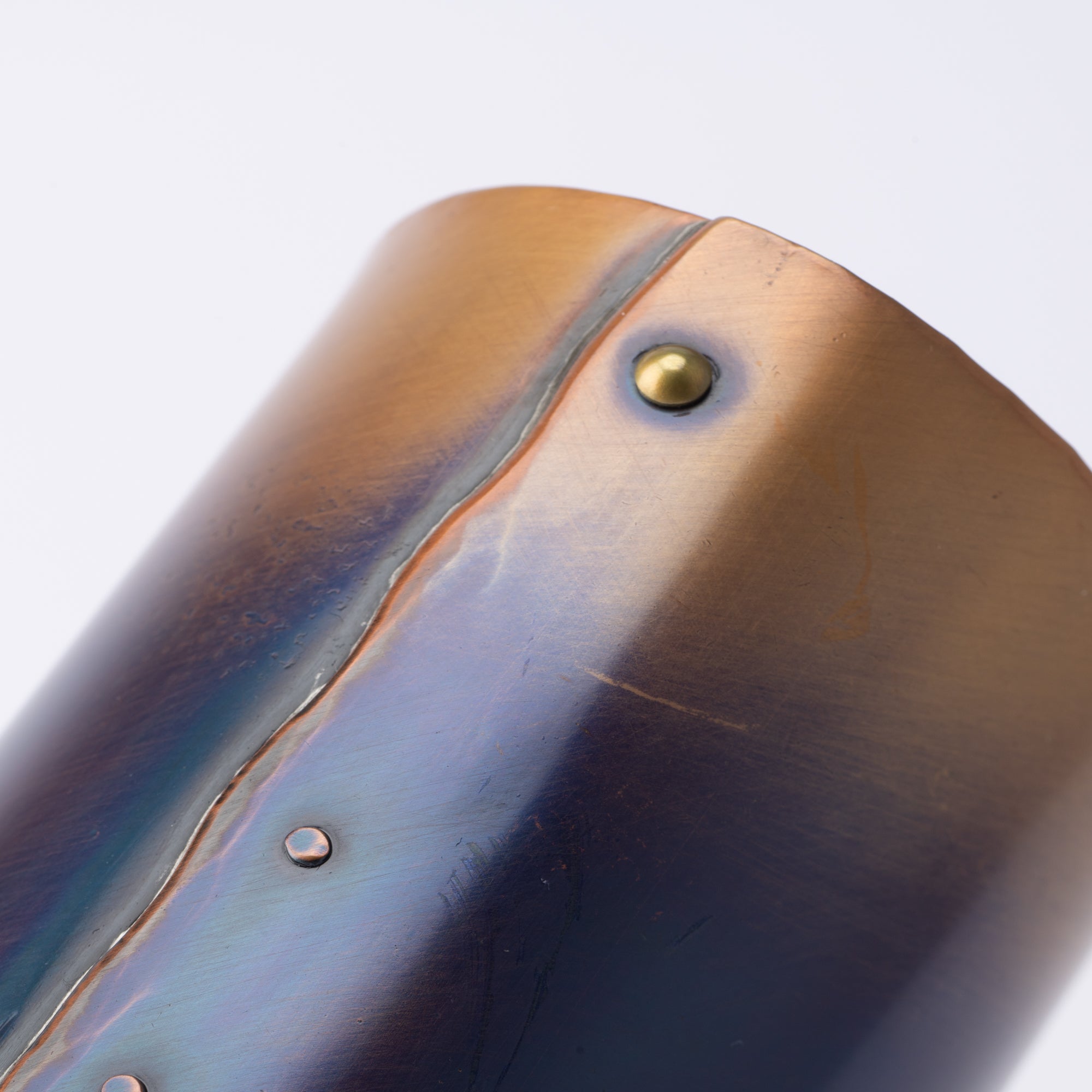
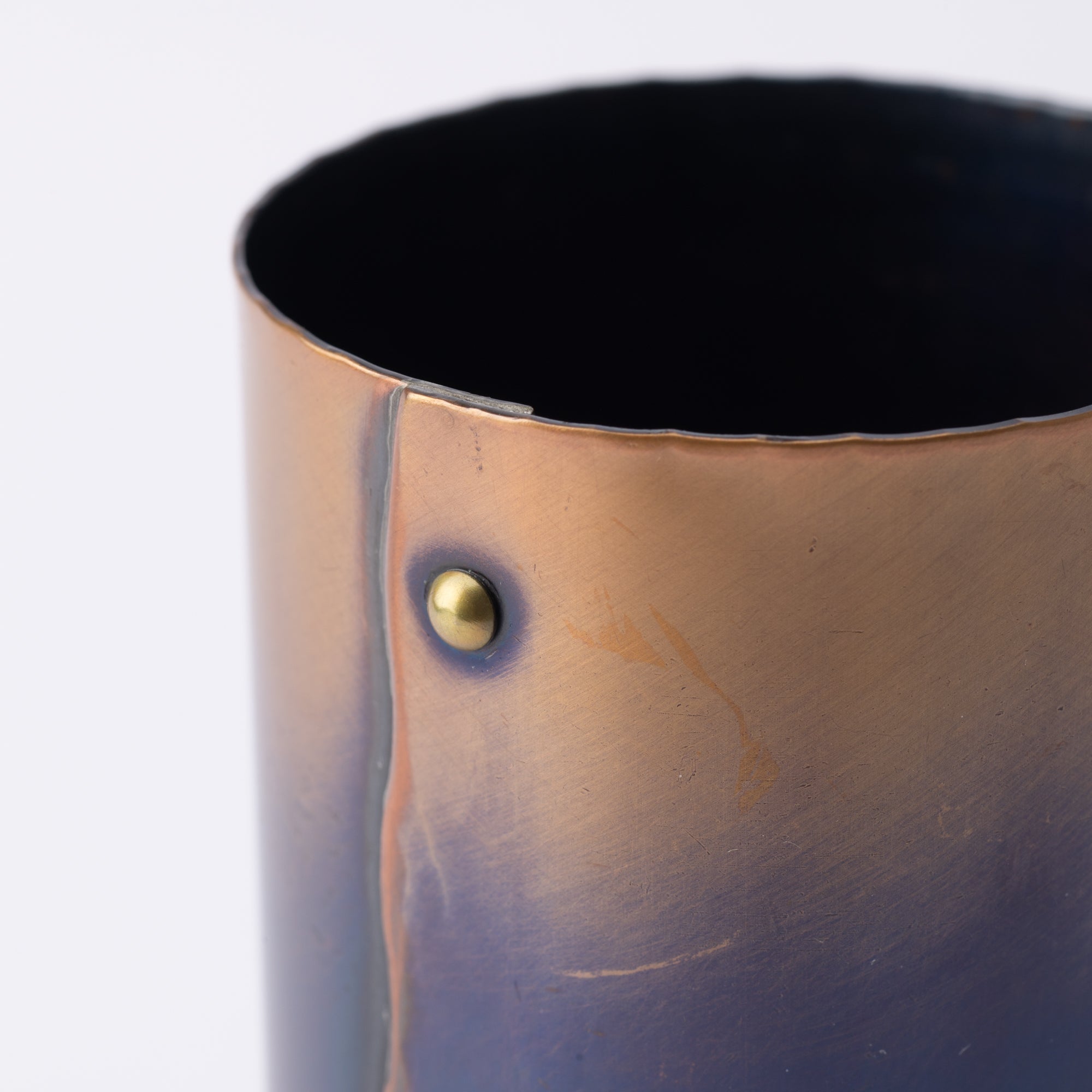
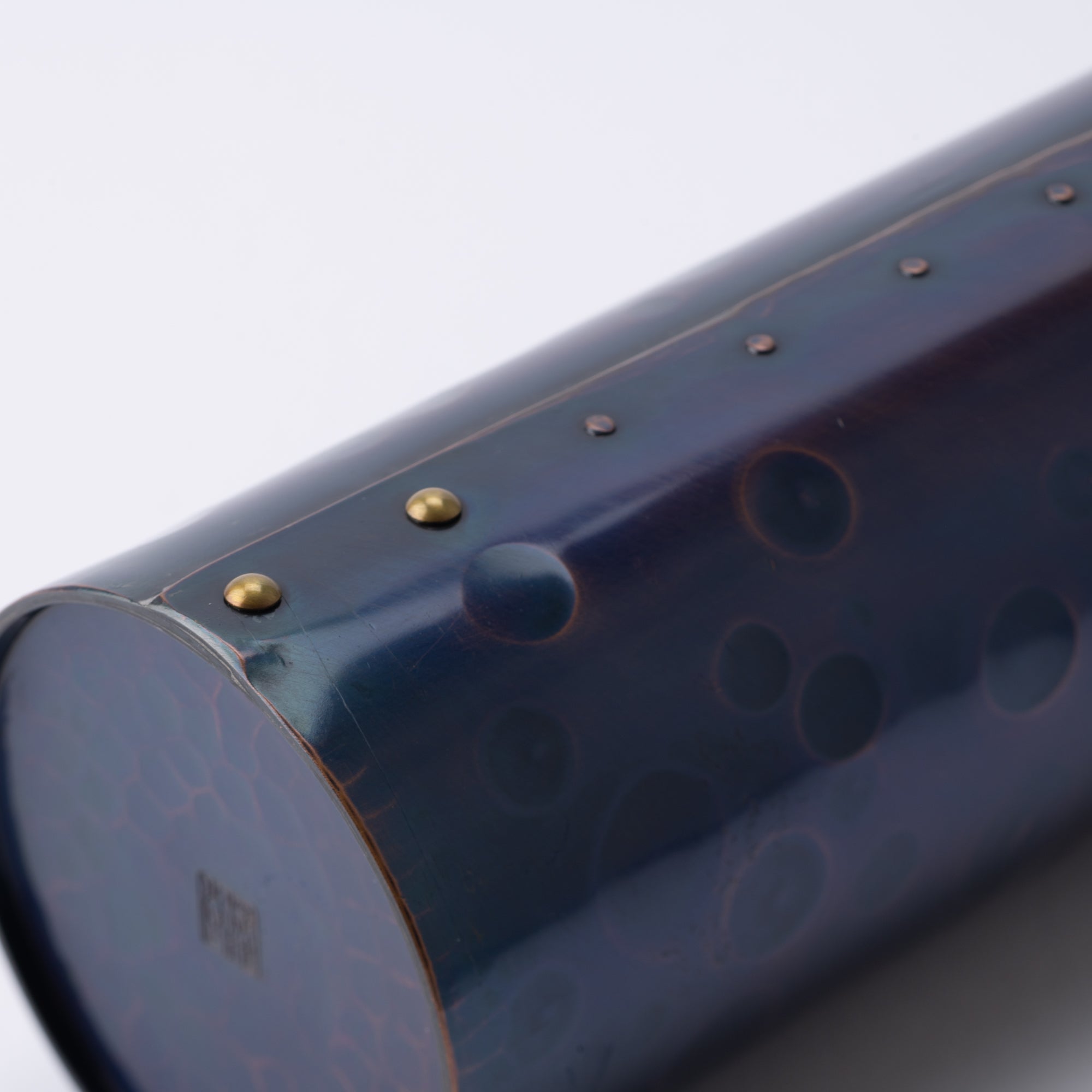
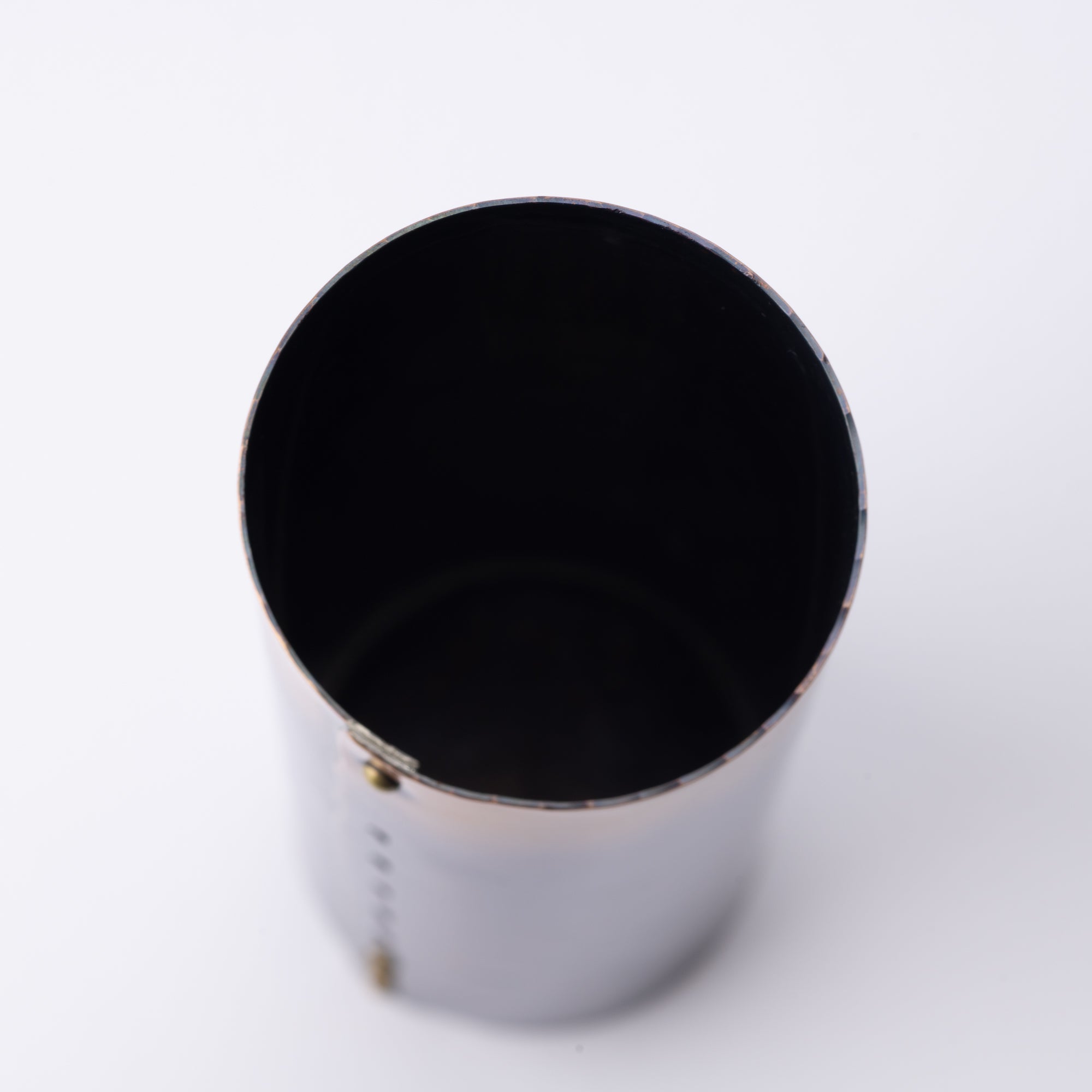
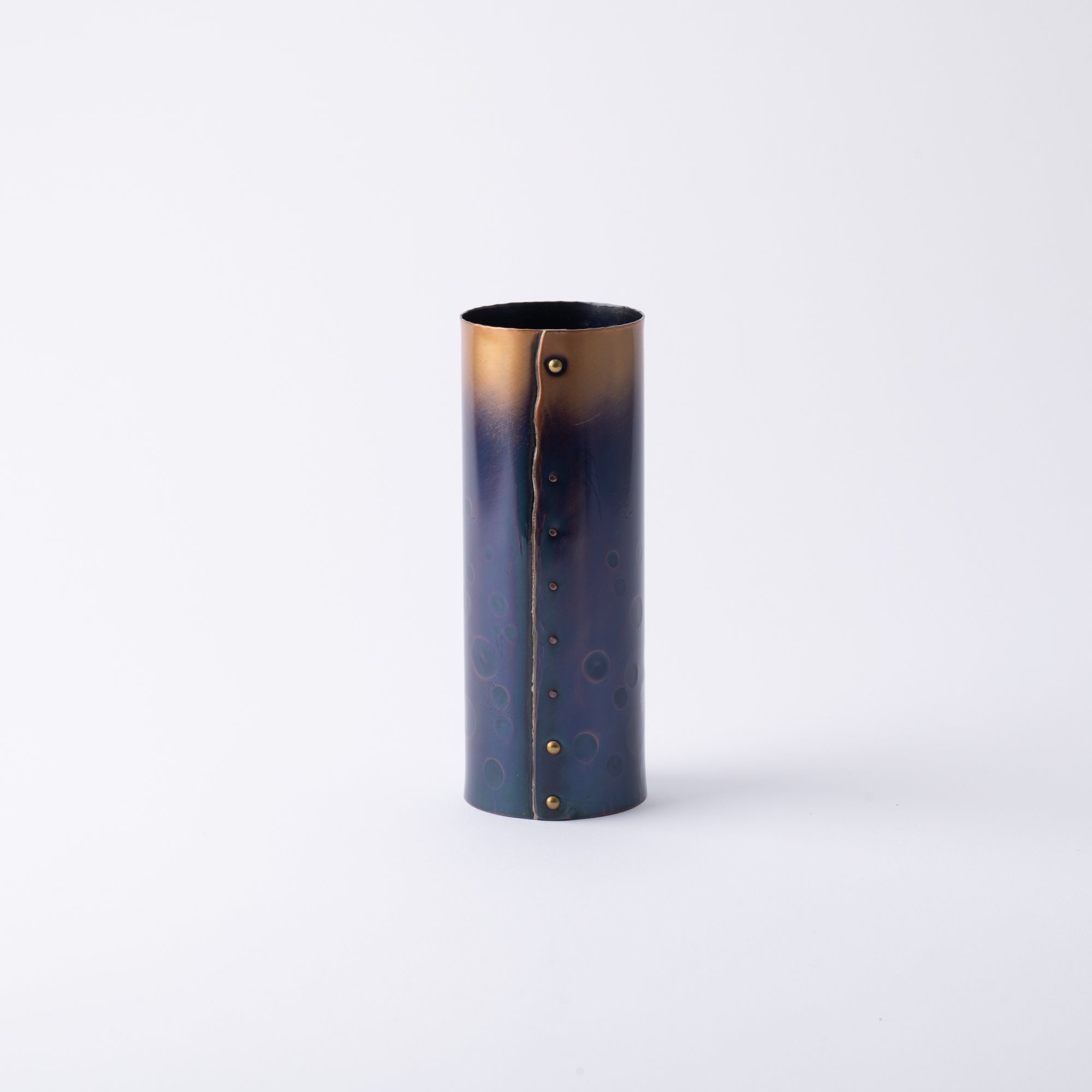
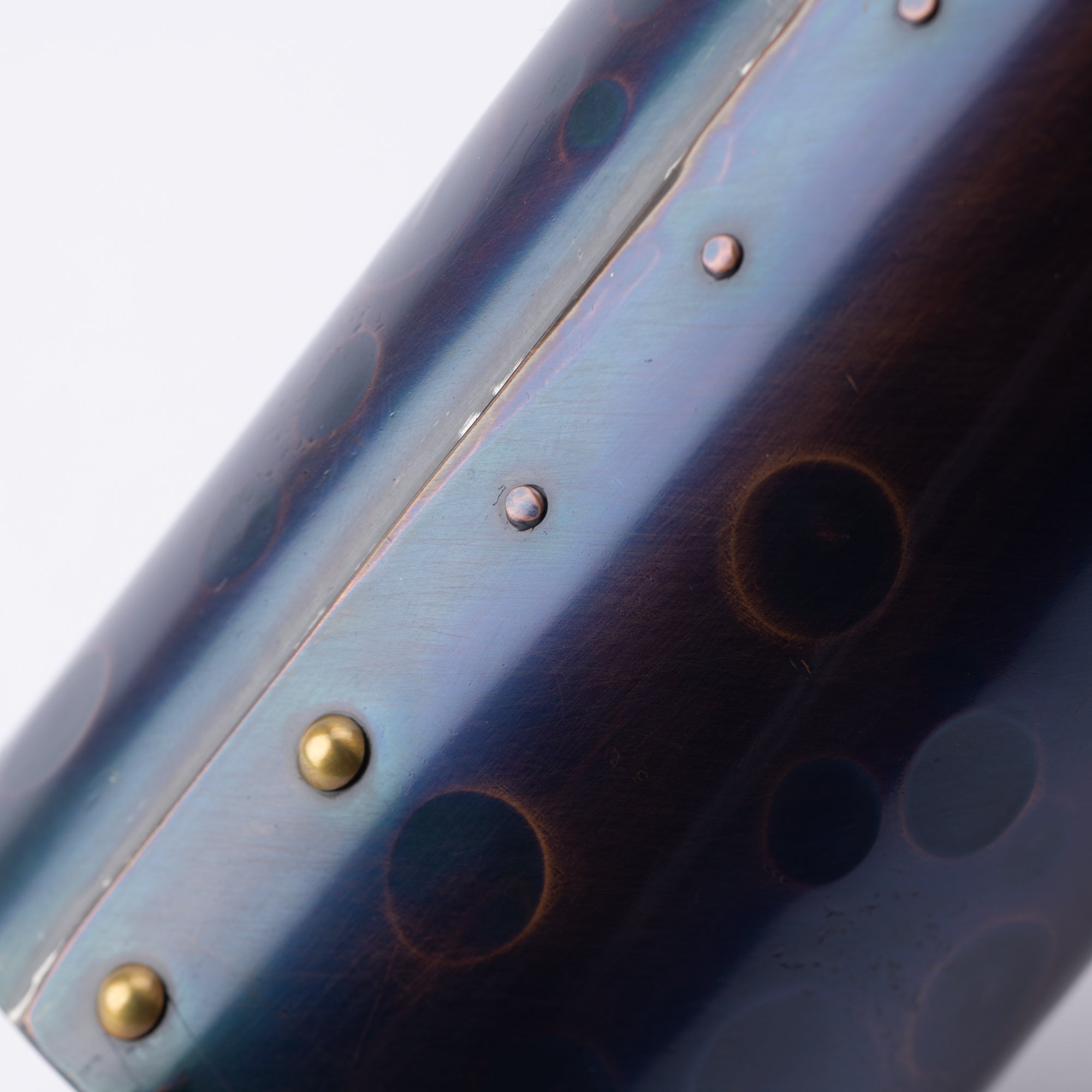
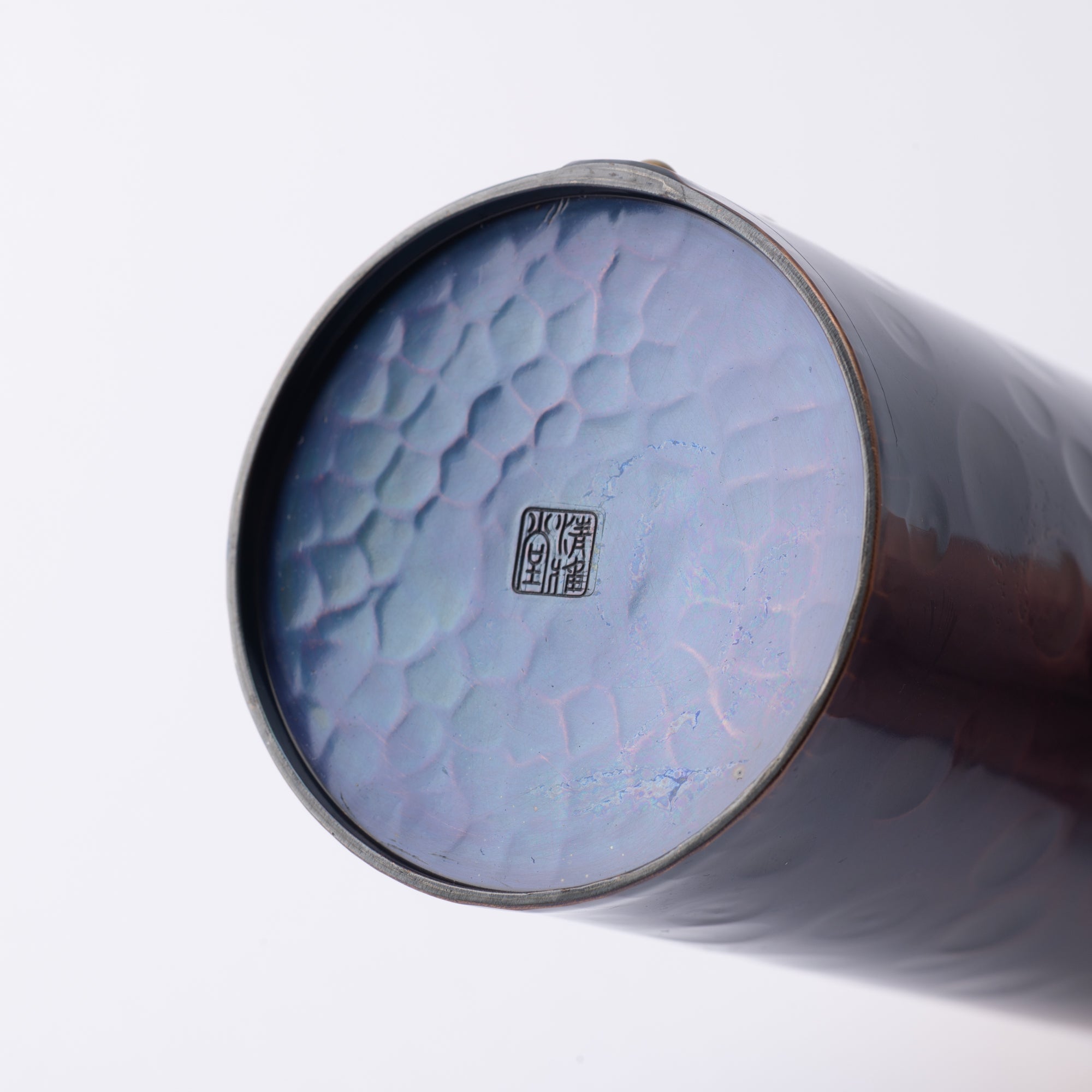
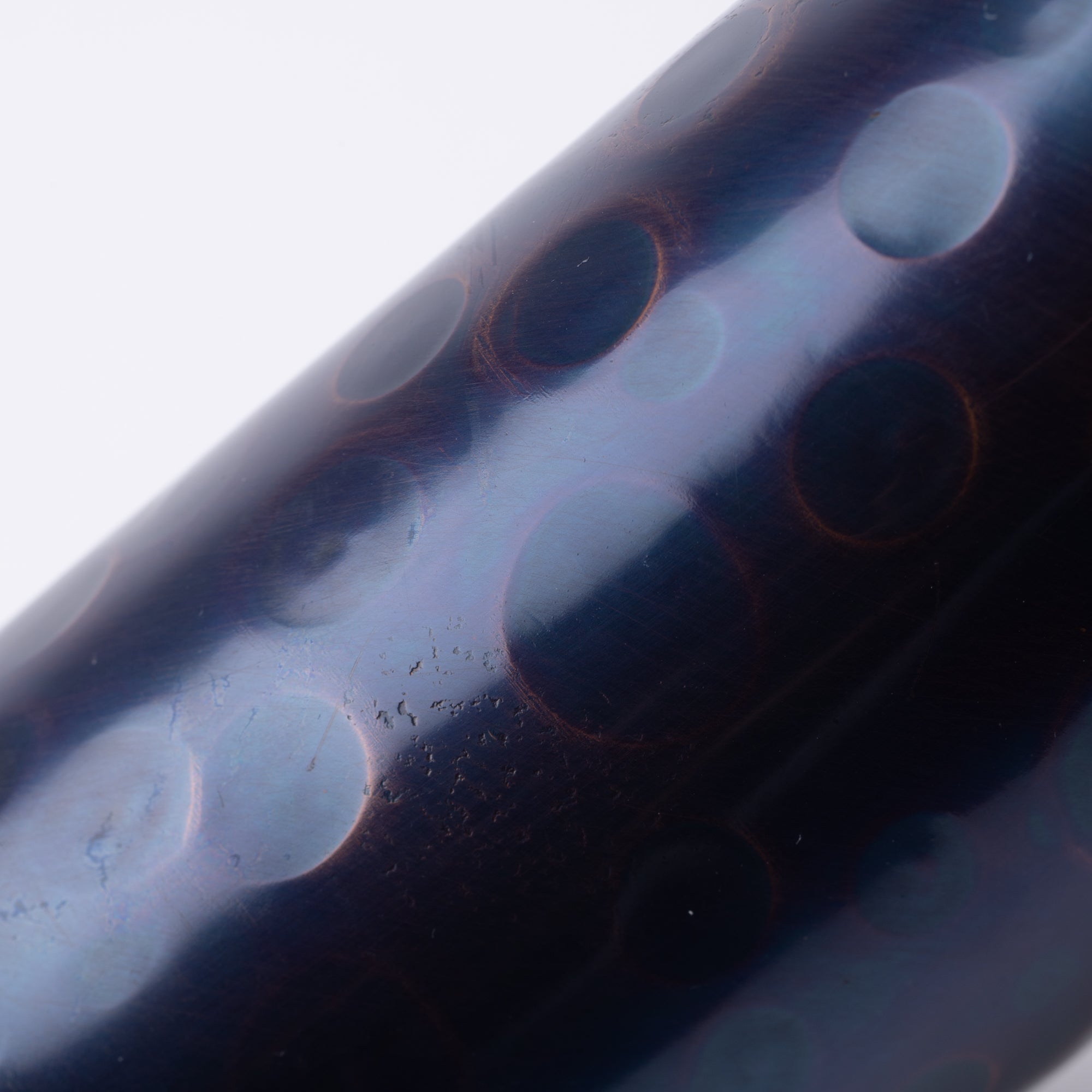
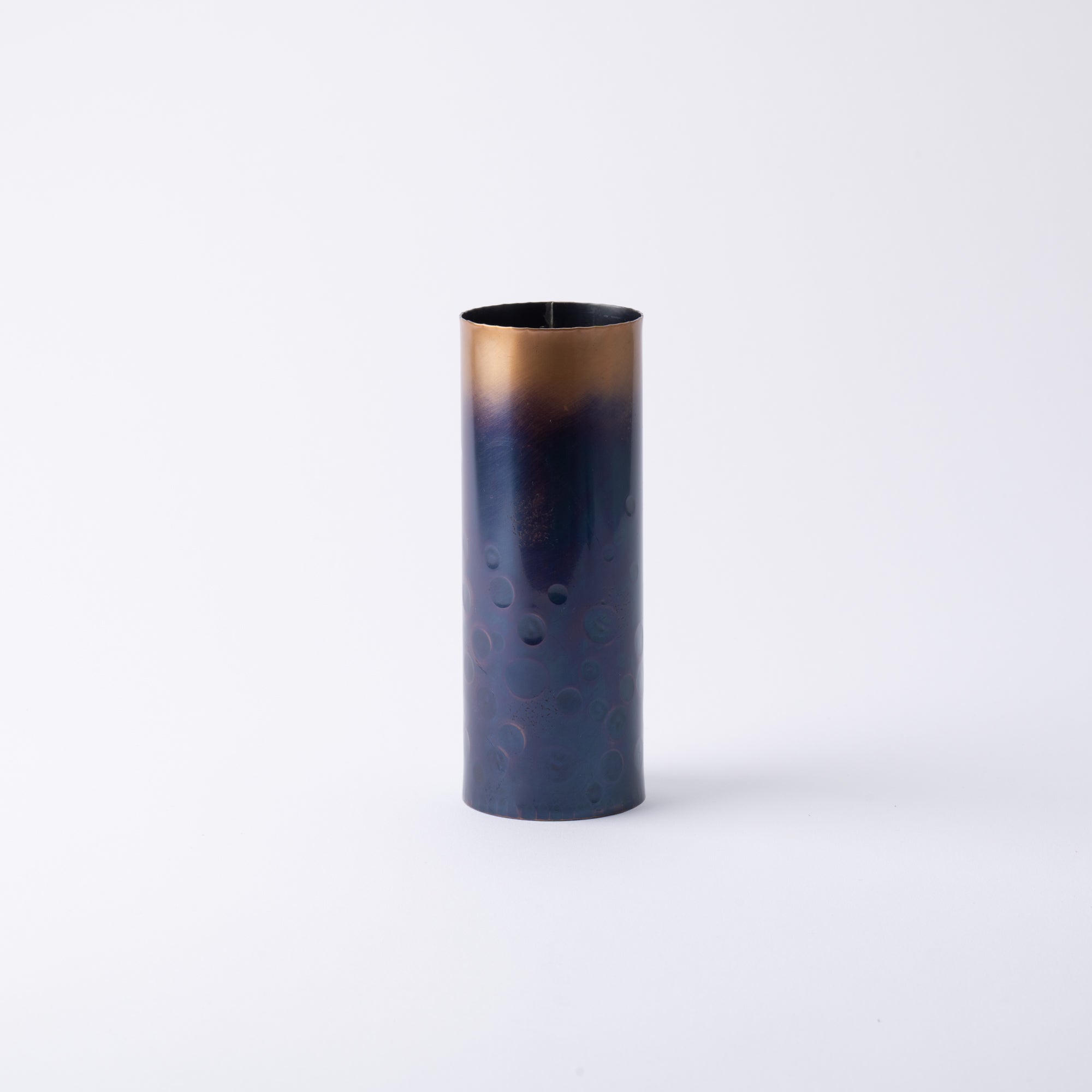
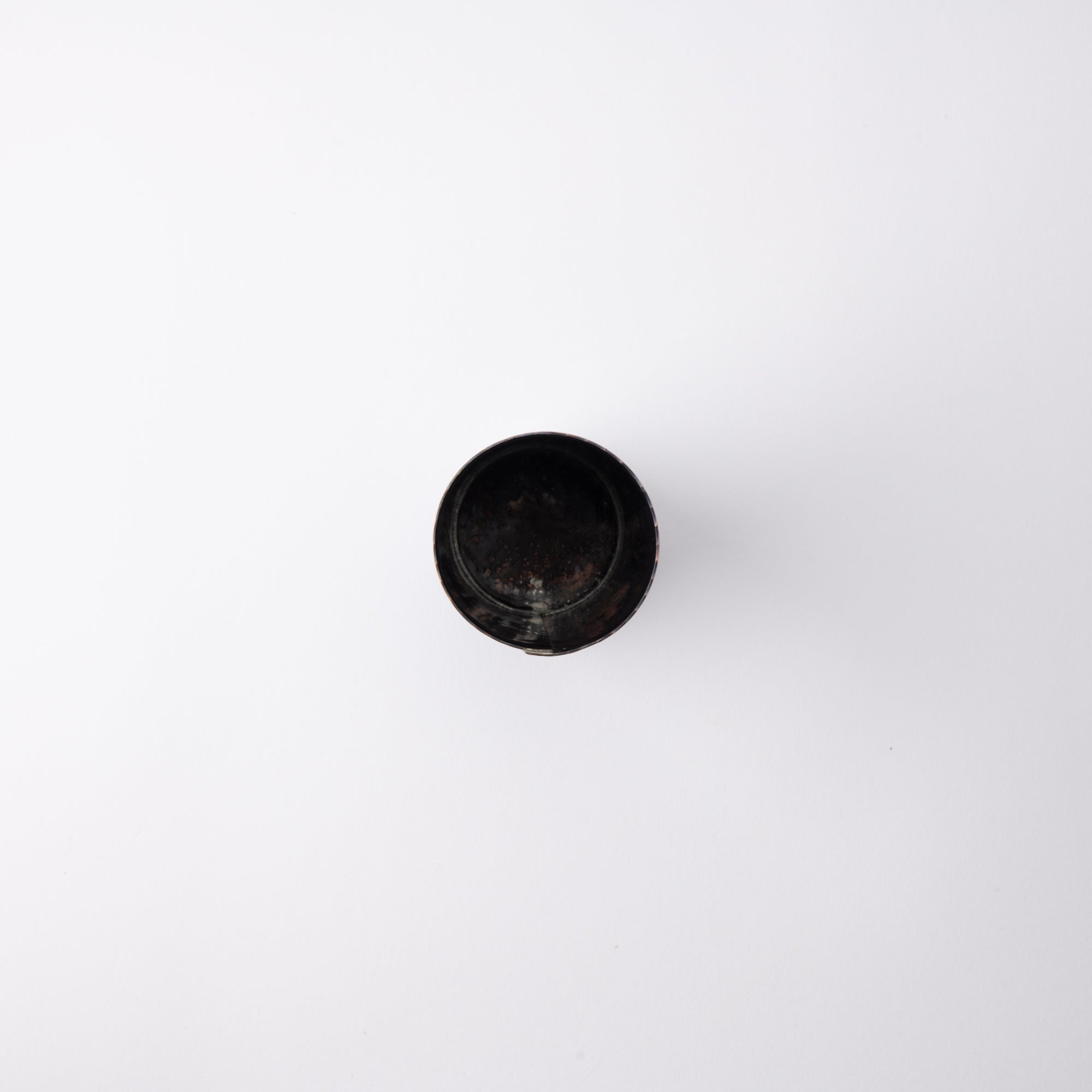
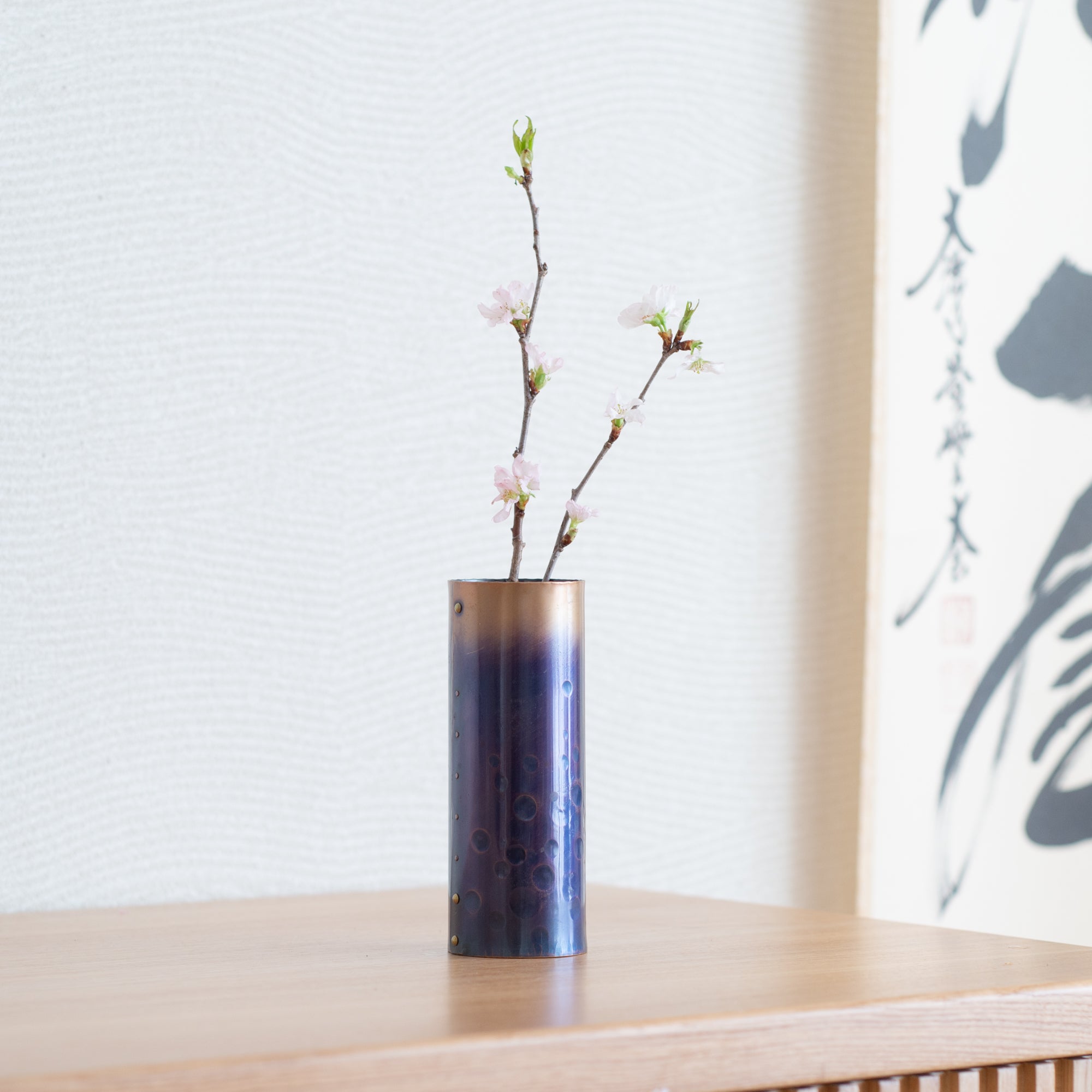
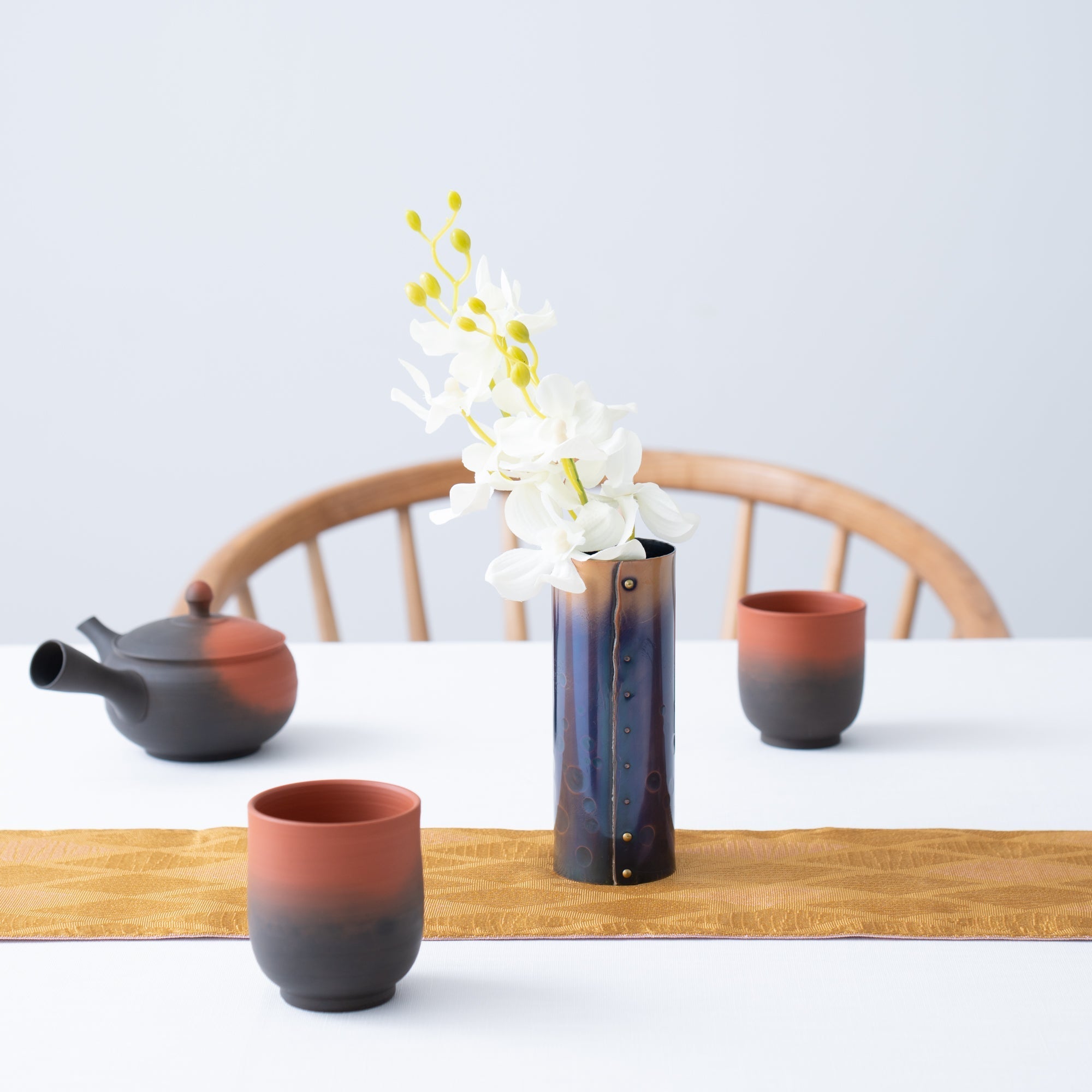
/
Seigado Purple Gradation Copper Single-Flower Vase
Estimated Shipping Widget will be displayed here!
A beautiful single-flower vase with an impressive purple gradient color and riveted design. This is a product of Seigado, the metalwork studio in Nigata prefecture.
The design is made by rolling a copper plate into a cylindrical shape. The shape is formed by hammering. The welded part is riveted to create a decorative design that also serves a practical purpose. A ball-like pattern is hammered on the surface to give it a unique look.
The surface color of the copper is gradated from brown to purple. This is a simple cylindrical vase with an interesting handmade quality.
The design is made by rolling a copper plate into a cylindrical shape. The shape is formed by hammering. The welded part is riveted to create a decorative design that also serves a practical purpose. A ball-like pattern is hammered on the surface to give it a unique look.
The surface color of the copper is gradated from brown to purple. This is a simple cylindrical vase with an interesting handmade quality.
This beautiful surface of purple coloration is the result of very delicate work as shown below.
1. Soak the copper in a thin sulfur solution to darken it.
2. Immediately rinse well with water and dry.
3. Polish the surface with a cloth. The black color becomes shiny and the hammered finish also appears.
4. Polish the surface more vigorously and carefully.
5. Next, boil Seigado's secret colored water solution.
6. Boiled for a short time in the boiling solution.
7. Immediately, the pot is rinsed with water and dried.
8. Then a purple color appears.
1. Soak the copper in a thin sulfur solution to darken it.
2. Immediately rinse well with water and dry.
3. Polish the surface with a cloth. The black color becomes shiny and the hammered finish also appears.
4. Polish the surface more vigorously and carefully.
5. Next, boil Seigado's secret colored water solution.
6. Boiled for a short time in the boiling solution.
7. Immediately, the pot is rinsed with water and dried.
8. Then a purple color appears.
Seigado has a workshop at the foot of Mt. Yahiko in Niigata Prefecture, where high quality copper was discovered about 300 years ago and "Tsuiki'', the technique of hammering copperware has developed since then.
"Tsuiki'' is a metalworking technique that is derived from the words 'hammer' and 'raise', so this process literally means hammering and embossing copperware products. The traces of the hammering, the process of making are left as beautiful patterns on the products.
PRODUCT DETAIL
- Dimension: D5.5cm(2.2in)×H15cm(5.9in)
- Material: Copper
- Origin: Made in Japan
- Brand: Seigado
![]()
Choose options





















Seigado Purple Gradation Copper Single-Flower Vase
Sale price$132.00 USD
Estimated Shipping Widget will be displayed here!
International Shipping
Multiple International Shipping Options
Discounted shipping for over 500000!
Free shipping for over 5000000!
Insured shipping service
Full compensation for any damage during transit.
Made by Japanese craftsmen
Fair Pricing, free Furoshiki wrapping!

